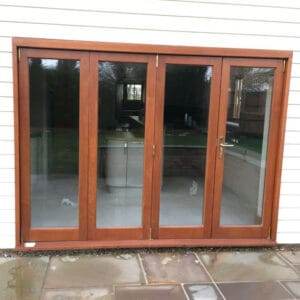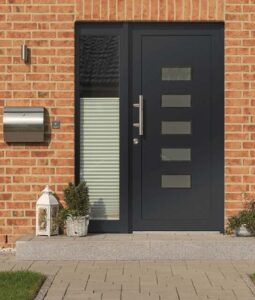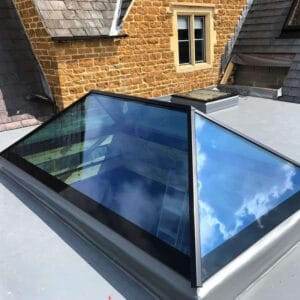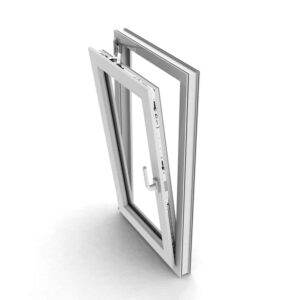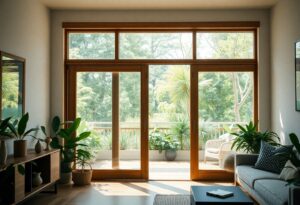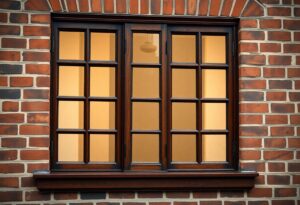With careful attention to installation best practices, you can ensure a perfect fit for your R2 windows and doors, enhancing both the aesthetic and performance of your home. Achieving an ideal seal is vital for maximising energy efficiency and preventing moisture intrusion, which can lead to significant damage. By following these guidelines, you can avoid common pitfalls and ensure that your investment withstands the test of time, while also improving your overall comfort and safety.

Understanding R2 Windows and Doors
To appreciate the value of R2 windows and doors, it’s imperative to comprehend their unique characteristics and design. These modern installations are engineered for energy efficiency, security, and aesthetic appeal. Their versatility makes them suitable for various architectural styles, allowing you to enhance the beauty of your home while improving functionality.
Key Features and Benefits
Beside their sleek appearance, R2 windows and doors offer numerous advantages that elevate your living experience:
- Energy Efficiency – Reduces heating and cooling costs.
- Durability – Resists wear and environmental damage.
- Security – Enhanced locking mechanisms for peace of mind.
- Customisation – Wide range of styles and finishes to match your home.
- Low Maintenance – Easy to clean and care for.
Perceiving these features helps you to make informed decisions that benefit both you and your property.
Material Considerations
This section explores the importance of material selection when choosing R2 windows and doors. The choice of materials directly influences durability, thermal performance, and overall aesthetics. Common materials include uPVC, aluminium, and timber. Each offers distinct advantages; for example, uPVC is renowned for its low maintenance and energy efficiency, while aluminium provides a modern, sleek finish with high strength. However, it’s important to select materials that align with your local climate conditions to avoid issues like warping or deterioration.
Preparing for Installation
Clearly, preparing for the installation of R2 windows and doors involves several necessary steps to ensure success. This includes a well-structured plan and a comprehensive understanding of the site where the installation will occur. Taking the time to prepare will save you from potential pitfalls and enhance the overall efficiency and effectiveness of your installation efforts.
Site Assessment
Between assessing the site conditions, measuring openings, and considering local regulations, a thorough site assessment is imperative. You need to inspect for any obstacles, such as uneven surfaces or surrounding structures, that could affect the installation process. Proper site evaluation ensures your windows and doors will fit perfectly, providing long-lasting performance.
Required Tools and Materials
To prepare adequately, you must gather all the necessary tools and materials before starting the installation. This includes basic tools such as a level, measuring tape, and drill, along with materials like insulation foam, shims, and sealants to help ensure a secure fit.
Hence, having the right tools and materials not only simplifies the installation process but also enhances the quality of your work. Make sure you have high-quality tools to reduce the risk of errors or accidents. Always prioritise safety measures to avoid any potential harm during installation. A well-stocked toolkit will significantly contribute to achieving the desired fit and finish for your R2 windows and doors.
Installation Process
While the installation process for R2 Windows and Doors may seem daunting, following a systematic approach can ensure a perfect fit. For extensive guidance, you can explore How to Install a Window: Tips & Tricks that provide valuable insights and techniques.
Step-by-Step Guide
On initiateing upon your installation journey, it’s advisable to break down the process into manageable steps. Below is a simplified table to help you:
Common Installation Mistakes to Avoid
Installation errors can lead to significant issues and compromise your windows’ functionality. Often, you may overlook the importance of correct measurements or fail to use adequate sealing techniques.
Consequently, avoiding these mistakes is paramount for achieving a successful installation. Pay attention to ensuring precise measurements, as even a slight deviation can result in gaps. Additionally, improper sealing can lead to water infiltration and energy loss. Always confirm that your window is level and square during installation to prevent future complications.
Ensuring Proper Fit
Many factors contribute to the proper fit of R2 windows and doors, and achieving this balance is important for optimal performance. Accurate installation not only allows for improved energy efficiency but also enhances the aesthetic appeal of your property. A well-fitting door or window ensures security and contributes to the longevity of the product, reducing the risk of potential issues such as drafts or water ingress.
Measuring Techniques
Any successful installation begins with precise measurements, as even a slight miscalculation can lead to significant problems later on. Use a reliable tape measure to obtain the width, height, and depth of your window or door openings. Document these measurements carefully and double-check to ensure accuracy. Employing a level can also aid in evaluating proper alignment, setting the stage for a seamless fit.
Adjustments and Calibration
Across various stages of installation, adjustments and calibration may be necessary to ensure a perfect fit. Proper alignment of the frame and accurate positioning of the hardware play a vital role in the overall function and aesthetics of windows and doors.
Techniques for adjustments can vary, but it often involves shimming to account for any irregularities, as well as repositioning hinges or tracks for optimal alignment. You should use a level to ensure that all components are correctly aligned before securing them in place. Also, be aware that over-tightening screws can lead to warping, while under-tightening may cause instability. Appropriately calibrating your installation allows for enhanced durability and reduces the risk of future maintenance issues.

Sealing and Weatherproofing
Now that your R2 windows and doors are installed, focus on sealing and weatherproofing to prevent drafts and moisture infiltration. Proper sealing enhances energy efficiency, prolongs the lifespan of your installations, and provides a comfortable living environment. By following the right techniques and using quality materials, you ensure a perfect fit that withstands the elements.
Importance of Proper Sealing
Above all, effective sealing is imperative in maintaining indoor comfort and energy efficiency. It minimises heat loss during winter months and prevents heat gain in summer, ultimately reducing your energy bills. Additionally, sealing helps protect your home from water damage and mould growth, which can cause significant issues if left unaddressed.
Recommended Products and Techniques
Importance of choosing the right products and employing effective techniques cannot be overstated. Use high-quality caulking for filling gaps, and ensure you select the correct type suitable for the materials involved. Consider weatherstripping for doors to create a snug fit, and utilise expanding foam for larger openings. Following manufacturer guidelines for installation will provide long-lasting results.
Further, when selecting products, look for those with excellent weather resistance ratings and ensure compatibility with your specific windows and doors. Pay attention to the installation technique; for instance, applying caulk in a continuous bead ensures a better seal. Regular maintenance and inspection of seals will also help you identify and address any potential issues before they escalate. Prioritising sealing and weatherproofing not only enhances the durability of your windows and doors but actively contributes to a more energy-efficient home.
Final Inspections and Adjustments
For the smooth operation of your R2 windows and doors, it is necessary to conduct thorough final inspections and make necessary adjustments. Check for any gaps, misalignments, or performance issues to ensure that everything operates as intended. For comprehensive guidelines, refer to the good practice guide for the installation of replacement windows and doors.
Quality Checks
About performing quality checks, it is necessary to evaluate the installation closely. Look for any visible defects, ensure the seals are tight, and verify that all components function smoothly. Regular checks will help maintain the longevity and efficiency of your window and door installations.
Addressing Potential Issues
With proper attention, you can quickly address potential issues that may arise during or after installation. Identify problems such as air leaks, stubborn locks, or improper sealing early on to prevent future complications.
Quality assurance is vital for ensuring your installation is effective. If you notice air leaks, difficulties with locking mechanisms, or gaps in the frames, it is necessary to address these issues immediately. Neglecting them can lead to energy inefficiency and water ingress, posing serious risks. By being proactive, you can ensure your installations are secure and perform reliably, enhancing your home’s comfort and energy efficiency.
Summing up
To wrap up, ensuring a perfect fit for R2 windows and doors requires careful adherence to installation best practices. By following the guidelines and making informed choices, you can enhance the durability and performance of your installations. Take the time to research your options thoroughly, such as checking out A Guide to Front Door Replacement Options for Your Entry, to ensure that your selections meet your needs. A successful installation not only improves aesthetics but also adds value to your property.
FAQ
Q: What are the key considerations when installing R2 windows and doors?
A: When installing R2 windows and doors, it is necessary to ensure proper measurements are taken to guarantee a perfect fit. Additionally, the quality of materials used for insulation and sealing is important to enhance energy efficiency. Furthermore, verifying the structural integrity of the opening and the choice of installation method—be it new construction or replacement—are significant factors to consider.
Q: How can I ensure the correct measurements for my R2 windows and doors?
A: To achieve the correct measurements, start by measuring the width and height of the window or door opening at multiple points to account for any irregularities. The smallest width and height measurements should be used for the final dimensions. Additionally, it is wise to check for any obstructions or protruding elements that may affect the installation process.
Q: What type of insulation should be used during the installation of R2 windows and doors?
A: High-performance insulation materials such as foam insulation board, fibreglass, or spray foam are recommended during the installation of R2 windows and doors. These materials not only help to eliminate thermal bridging but also improve energy efficiency by ensuring a tight seal around the window or door frame, minimising drafts and air leakage.
Q: Are there specific tools required for the installation of R2 windows and doors?
A: Yes, specific tools are beneficial for the installation process. Essential tools include a measuring tape, level, plumb line, drill, screwdriver, utility knife, and caulking gun. Additionally, having a second pair of hands to assist in holding the window or door during positioning can make the installation process smoother and more accurate.
Q: What are the common mistakes to avoid during the installation of R2 windows and doors?
A: Common mistakes during installation include neglecting to check the level and plumb of the window or door, using incorrect fasteners, or using inadequate sealing materials. It is also important to avoid over-tightening screws, which can cause warping or damage. Taking the time to follow installation guidelines and verifying each step will help prevent these issues.


